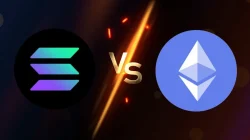Cryptocurrency is no longer just a niche interest for tech-savvy investors. With the explosive growth of digital assets and blockchain-based projects, understanding the fundamentals behind a cryptocurrency has become a crucial skill for any serious investor or enthusiast. Unlike traditional financial instruments, crypto assets often require a unique set of analytical tools to evaluate their real potential. This guide is designed for beginners who want to learn how to analyze crypto fundamentals, avoid hype-driven traps, and make more informed investment decisions.
1. What Are Crypto Fundamentals?
Fundamental analysis (FA) is a method of evaluating the intrinsic value of an asset by examining related economic, financial, and qualitative and quantitative factors. In the context of cryptocurrencies, it involves understanding what makes a particular coin or token valuable beyond price trends or speculation. Unlike stocks, crypto assets do not have earnings reports or revenue figures in the traditional sense. Instead, analysts look at the technology, use cases, developer activity, community strength, and tokenomics.
Why Fundamental Analysis Matters
In crypto markets, price movements can be extremely volatile. While technical analysis might help in timing entry and exit points, it doesn’t provide insights into why a coin should be worth anything at all. Fundamental analysis answers this question by focusing on the underlying value proposition.
2. Whitepapers: The Blueprint of a Project
One of the first steps in analyzing a cryptocurrency is reading its whitepaper. A whitepaper is essentially the blueprint of a blockchain project. It outlines what the project is trying to achieve, the technology it uses, how it works, and how tokens are distributed.
Key components to look for in a whitepaper:
- Problem Statement: What problem is the project solving?
- Solution and Technology: How is it solving the problem, and is the technology sound?
- Token Utility: What is the role of the token within the ecosystem?
- Roadmap: Is there a clear plan for development?
- Team Information: Who is behind the project?
Red flags in a whitepaper may include overly complex jargon with no clear explanation, unrealistic promises, or lack of transparency about token allocation.
3. The Use Case and Value Proposition
Understanding the use case of a cryptocurrency is essential. Ask yourself: Does this project solve a real-world problem? Is there a clear demand for the solution it provides?
Some common categories of use cases:
- Currency (e.g., Bitcoin): Digital cash and store of value.
- Smart Contracts (e.g., Ethereum, Solana): Platforms for building decentralized applications.
- Privacy Coins (e.g., Monero, Zcash): Focused on anonymous transactions.
- Stablecoins (e.g., USDT, USDC): Pegged to fiat currencies for stability.
- Utility Tokens (e.g., Chainlink, Uniswap): Used within specific ecosystems for services.
- Governance Tokens (e.g., Aave, Compound): Provide holders with voting rights.
A project with a clear, innovative, and scalable use case is more likely to have long-term value.
4. The Development Team and Advisors
Behind every successful cryptocurrency project is a competent team. Research the people involved, including:
- Founders
- Core Developers
- Advisory Board
- Community Managers
Use platforms like LinkedIn, GitHub, and even Reddit to find out more about their backgrounds. Key questions to consider:
- Do they have experience in blockchain development?
- Have they worked on successful projects before?
- Are they publicly known or anonymous?
While anonymity isn’t necessarily bad (Satoshi Nakamoto was anonymous), a team that’s transparent and has verifiable credentials tends to inspire more trust.
5. GitHub and Developer Activity
Developer activity is a strong indicator of a project’s health. GitHub is the most common platform where developers publish and update open-source crypto code. You don’t need to be a coder to benefit from checking it.
Here’s what to look for:
- Number of commits: Frequent updates suggest active development.
- Contributors: A larger number of contributors indicates a more decentralized and robust development effort.
- Recent activity: If the project hasn’t been updated for months, it might be abandoned.
- Quality of code comments: This shows how well-structured and maintainable the code is.
Active development suggests that the project is being maintained, improved, and taken seriously by its team.
6. Tokenomics: Supply, Demand, and Distribution
Tokenomics (token economics) refers to the economic model of the cryptocurrency. It answers the question: How does the token function in its ecosystem, and what drives its value?
Key Elements of Tokenomics:
- Total Supply: How many tokens will ever exist?
- Circulating Supply: How many are currently in the market?
- Inflation or Deflation: Will new tokens be created over time?
- Burn Mechanisms: Are tokens periodically destroyed to reduce supply?
- Utility: Is the token needed for the platform’s services?
- Incentives: How are users and developers incentivized?
Token Distribution
Look at how tokens are allocated:
- What percentage went to the team and advisors?
- How much was sold in public and private sales?
- Is there a lock-up period for team tokens?
A fair and transparent token distribution reduces the risk of pump-and-dump schemes and ensures long-term alignment of interests.
7. Community and Social Media Presence
A strong and engaged community can be a powerful driver of adoption and growth. Many successful projects owe their visibility and momentum to their communities.
Key Channels to Evaluate:
- Twitter: Is the account active and followed by influential voices?
- Reddit: Are discussions insightful or just filled with hype?
- Telegram/Discord: Is the team present and responsive?
- YouTube/Podcasts: Are there community-driven discussions and analyses?
Beware of artificially inflated followers or engagement. If a project has a large following but low actual conversation or intelligent discussion, it may be driven by bots or hype.
8. Partnerships and Integrations
Strategic partnerships can give credibility and utility to a project. If a blockchain platform partners with a known company or integrates with major platforms, it’s often a sign of real-world traction.
However, not all partnerships are equal. Always verify:
- Is the partnership officially confirmed by both parties?
- What is the scope of the collaboration?
- Does it lead to increased token usage or visibility?
Empty or fake partnerships are common in crypto, so always do your due diligence.
9. Roadmap and Milestones
A detailed and realistic roadmap shows the team’s vision and commitment. When analyzing a project’s roadmap, look at:
- Clarity: Is it specific or vague?
- Timelines: Are there clear deadlines?
- Past performance: Did they deliver previous milestones on time?
Check the project’s blog and announcements to track past progress. Consistency in meeting goals adds credibility and confidence in future performance.
10. Regulatory Compliance and Legal Considerations
Regulatory scrutiny is increasing globally. Projects that consider legal compliance early are more likely to survive in the long run.
Check for:
- KYC/AML requirements: Did the project conduct a legal token sale?
- Jurisdiction: Where is the company incorporated?
- SEC/SEC-like Compliance: Is the token classified as a utility or a security?
Projects that work with regulators or take steps to comply with laws show maturity and awareness of the legal environment.
11. On-Chain Metrics
On-chain data gives you an idea of how the network is being used. Some important metrics include:
- Transaction Volume: How much value is transferred daily?
- Active Addresses: How many unique addresses are interacting?
- Hash Rate (for proof-of-work coins): A higher hash rate suggests stronger network security.
- Staking Participation: In PoS-based systems, high staking rates often show trust in the project.
You can find this data on platforms like Glassnode, CoinMetrics, or directly from block explorers.
12. Market Capitalization and Liquidity
Market cap = price × circulating supply. While a high market cap may suggest a well-established coin, it doesn’t always mean it’s a good investment. Look beyond market cap to understand value.
Liquidity
Liquidity measures how easy it is to buy or sell a coin without affecting its price too much. Check:
- Daily Trading Volume: Higher volume usually means better liquidity.
- Exchange Listings: Is it listed on major, reputable exchanges?
Poor liquidity can trap investors, especially during market downturns.
13. Inflation and Emission Rates
Some tokens are inflationary, which means their supply increases over time. Others are deflationary, decreasing supply through mechanisms like burns.
Ask:
- Is the inflation rate sustainable?
- Does it dilute existing holders?
- Are there rewards for long-term holders to compensate for inflation?
A well-balanced emission rate encourages participation without compromising long-term value.
14. Vesting Schedules
Vesting schedules determine when team members or early investors can sell their tokens. A responsible vesting schedule reduces the risk of large dumps.
Look for:
- Time-based vesting: Gradual release over years.
- Cliff periods: Delays before any tokens are released.
Transparent vesting schedules help maintain price stability and investor confidence.
15. Competitor Analysis
No project exists in a vacuum. Analyze competitors to understand where the project stands in the market.
Ask:
- Is this project offering something unique?
- How does its technology compare to others in the space?
- Are there barriers to entry that protect it from being easily copied?
If a project doesn’t have a clear differentiator or moat, it may struggle to survive in the long term.
16. Token Utility and Real Demand
Tokens that lack real-world usage often fail in the long run. Look for genuine demand:
- Is the token required to access services?
- Are there use cases beyond speculation?
- Are businesses or platforms adopting it?
The more integral the token is to the ecosystem, the stronger its fundamentals.
17. Inflation vs Scarcity Dynamics
Scarcity can drive value—think Bitcoin’s 21 million limit. However, scarcity alone is not enough. It must be combined with demand.
Compare:
- Scarce coins with high demand (e.g., BTC)
- Abundant coins with no demand (e.g., failed ICO tokens)
The balance between scarcity and utility drives value.
18. Security and Audit Reports
Smart contract vulnerabilities have led to millions of dollars in losses. Always check whether the project has undergone security audits.
Look for:
- Reputable audit firms like CertiK, Trail of Bits, or ConsenSys Diligence.
- Public audit reports that detail findings and fixes.
- Bug bounty programs that incentivize finding vulnerabilities.
Security is non-negotiable in crypto.
19. Decentralization Level
One of crypto’s core values is decentralization. Projects that are overly centralized face censorship risks and may be vulnerable to manipulation.
Check:
- Validator distribution in PoS systems.
- Governance models: Are changes decided by a small group?
- Open-source status: Can anyone audit or contribute to the code?
Truly decentralized projects tend to be more resilient and community-driven.
20. Final Thoughts on Fundamental Analysis
Fundamental analysis is both an art and a science. It requires patience, curiosity, and a skeptical eye. While no analysis can guarantee investment success, building a habit of studying the fundamentals can help you avoid hype-driven traps and invest in projects with real potential.







